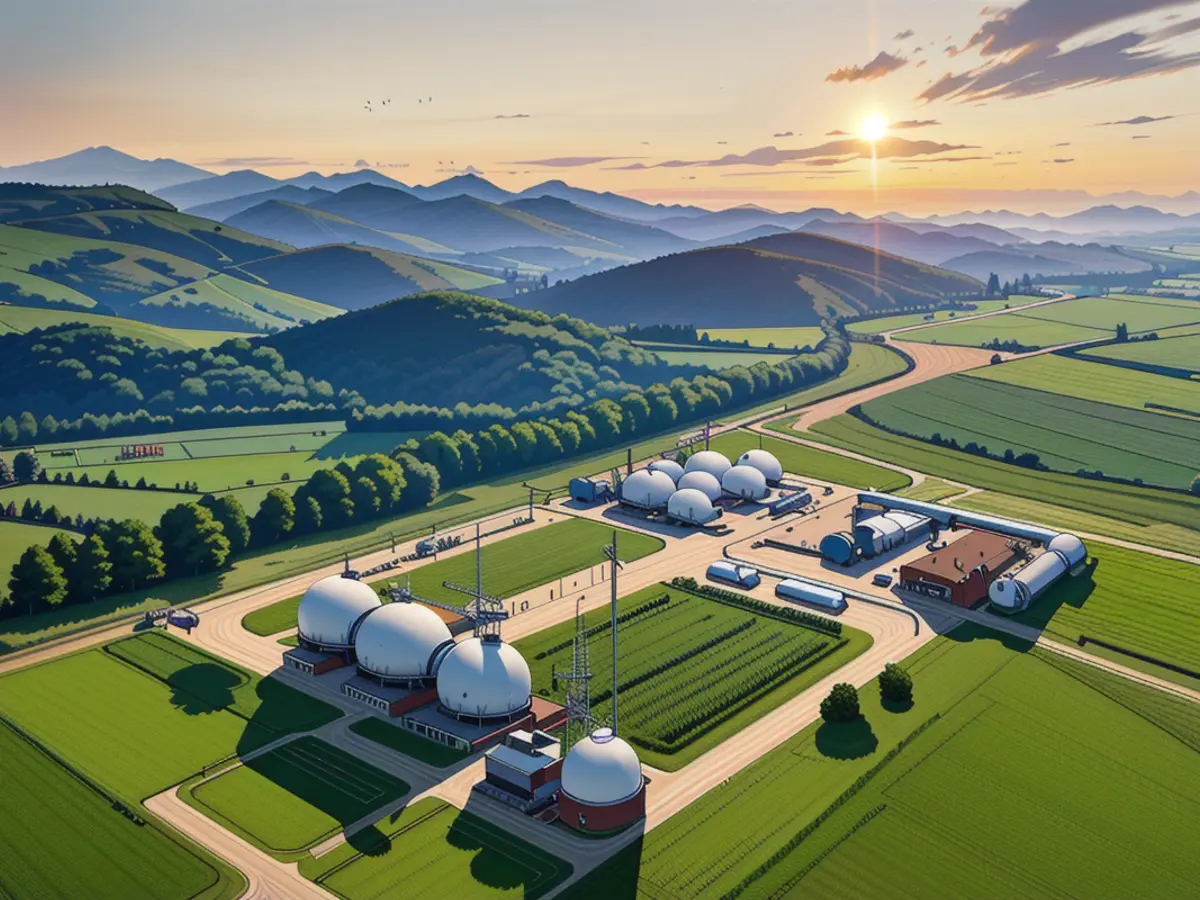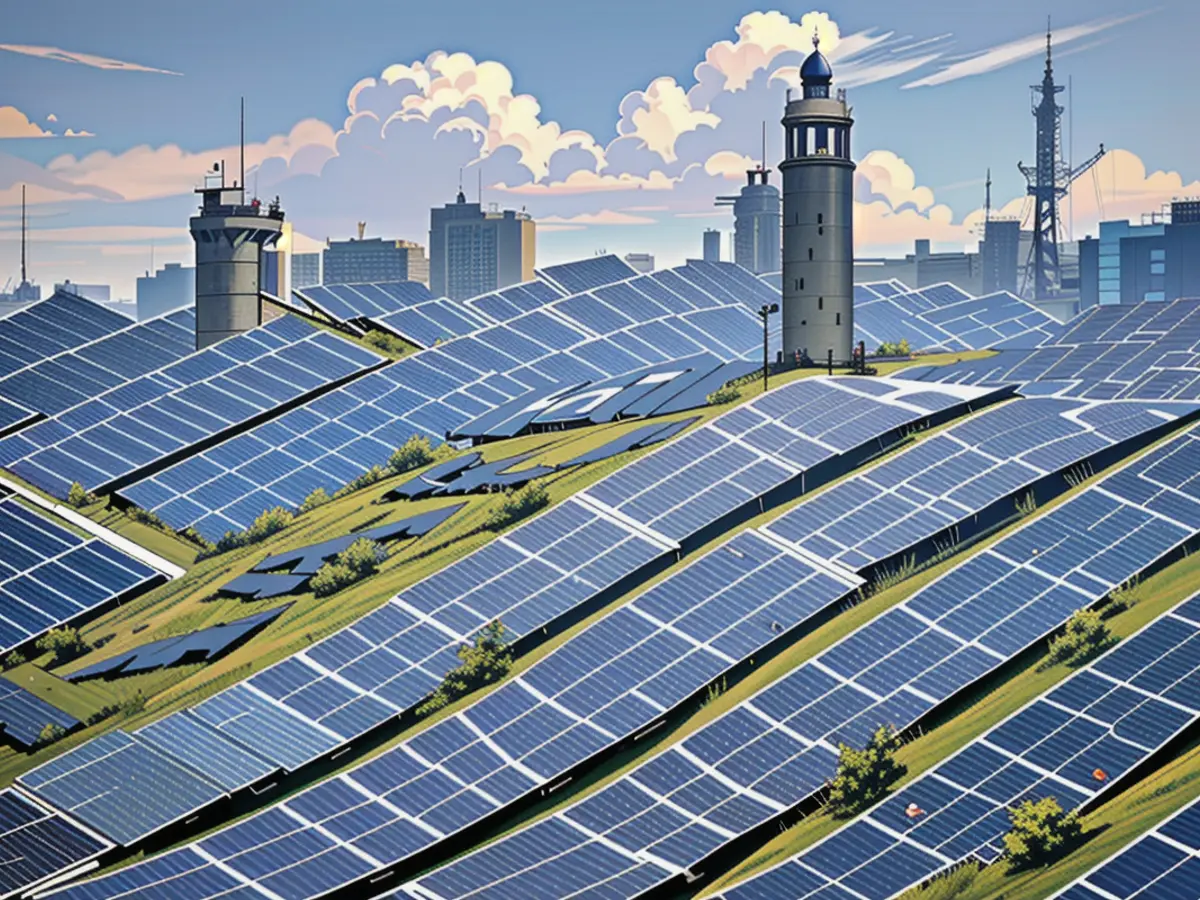"Green AI": The Balancing Act of a Pioneering Advancement
The surge of Artificial Intelligence (AI) has significantly transformed and escalated various industrial sectors. Simultaneously, the clean tech sector is thriving, pushing the boundaries of technology innovation. Each sector has immense, often untapped, potential, and their combined force could substantially drive the shift towards clean energy.
However, as with any significant technological evolution, new challenges emerge. Initially designed for centralized energy generation, our 20th-century grid is now grappling with the multi-directional flow of electricity due to clean energy initiatives tapping into alternative sources.
Enter Green AI. This innovative technology is poised to revamp energy systems, focusing on sustainability and efficiency, to address climate change.
Transition without Transmission is Impossible

According to the U.S. Energy Information Administration's 2022 predictions, by 2050, approximately 44% of the power supply will originate from renewables. This is more than double the 21% achieved in 2023. The EIA's 2023 outlook, factoring in the impact of the Inflation Reduction Act, suggests an even higher figure. To achieve this renewable energy dominance, a grid overhaul is imminent.
The U.S. Department of Energy, in its report "AI for Energy: Opportunities for a Modern Grid and Clean Energy Economy," foresees that AI could facilitate the rapid shift towards a 100% clean energy future in the U.S. AI's real-time data integration capabilities could expedite the incorporation of renewables into the grid, reducing the risks and complications associated with power outages, which cost the U.S. an estimated $150 billion annually.
Demands for modernization aren't exclusive to the U.S. Members of the Trans-European Networks for Energy have identified smart electrical grids as one of their priority areas. In response, Slovenia and Croatia have successfully launched a cross-border smart grid initiative, enhancing the accessibility and integration of renewable energy sources. France and Germany have also initiated a project to structure a cross-border energy optimization program.

Regulatory frameworks for critical infrastructure, like grids, are crucial to ensure safety, security, and reliability. The European Union's upcoming AI Act aims to establish robust risk management systems, requiring AI models to undergo rigorous validation, ethical implementation, and full compliance with power grid governance standards.
In the U.S., the incoming administration's stance on AI remains unclear, but this ambiguity provides an excellent opportunity to establish a unified, global approach that fosters innovation while implementing necessary safeguards.
Infrastructure Under Pressure

Improvements in AI are vital for various aspects of our infrastructure beyond the grid. Considering that the average age of hydropower facilities in the U.S. is over 70 years old, the need for predictive maintenance is becoming urgent. AI advancements through energy providers by the US Department of Energy's Argonne National Laboratory enable them to forecast wear and tear, predict expected lifespans, and optimize maintenance schedules.
AI facilitates the development and introduction of new infrastructure at various stages of the energy value chain, from resource utilization to health and safety to corporate social responsibility. For instance, AI can optimize the placement of renewable energy sources, manage energy distribution, optimize pricing, and help adhere to energy compliance standards by processing data from multiple sources.
AI applications extend to agriculture, enhancing precision farming by providing insights into crop health, soil conditions, and irrigation requirements, allowing farmers to conserve resources and reduce environmental impact.

AI for Energy Optimization: A Double-edged Sword
From homes to industrial settings, Building Management Systems (BMS) are incorporating AI capabilities to minimize energy waste. AI-powered sensors can analyze daily power usage patterns, optimizing heating, cooling, and ventilation, as well as lighting, water management, and fire safety. Additionally, AI solutions can combine real-time emission data with information from drones or satellites to detect energy optimization opportunities.
However, the growing demand for data centers calls for careful management to prevent grid overload. By 2027, AI's power demands could match Spain's 2022 energy consumption without proper management, potentially hindering sustainability efforts.

Accountability Boosts the Bottom Line
Businesses like Microsoft and Google are embracing accountability and reaping the benefits. Their Net Zero Innovation Hub, a collaboration with various partners, links European data centers with the energy and utilities sectors, focusing on accelerating net-zero goals.
Google's DeepMind is at the forefront of developing sustainable AI. Recent accomplishments include reducing their data center cooling expenses by 40%.

Capitalizing on AI Opportunities
The acceleration of AI development coincides with increasing investment opportunities. As predicted in MIT Technology Review, this growing interest is evident in initiatives by major investors and companies, such as the partnership between BlackRock, Global Infrastructure Partners, Microsoft, and MGX, aiming to mobilize up to $100 billion for new energy infrastructure development and sustainability.
Additionally, Blackstone's acquisition of AirTrunk will cater to the escalating AI and cloud computing demands in the Asia-Pacific, while maintaining a commitment to 100% renewable energy by 2030.
Invoking the right applications, the World Economic Forum prophesies that AI could become a potent instrument in attaining our COP28 objectives, which involve increasing renewable energy capacity threefold and enhancing energy efficiency by double by 2030.
This positive outlook has led to the rise of Green AI, an initiative advocating for AI-fueled solutions to construct a greener, energy-efficient future.
To materialize this ambition, we necessitate a united effort from corporations and governments, focusing on making the energy consumption of data centers and machine learning processes environmentally friendly. Failing to do so might result in generating more CO2 to counterbalance the existing CO2 emissions, akin to perpetually chasing our tail.
In tandem with upgrading energy infrastructure and instituting unwavering, consistent regulations, these initiatives can convert the potential of Green AI into tangible reality.
In the context of the shifting energy landscape, Green AI, a type of artificial intelligence, could significantly contribute to the transformation of energy systems. It focuses on enhancing sustainability and efficiency, aligning perfectly with the increasing reliance on renewable energy sources.
Furthermore, the potential of artificial intelligence in facilitating a smooth transition to a 100% clean energy future is being recognized globally. For instance, the US Department of Energy sees AI as a key enabler for integrating renewables into the grid, reducing the risks and costs associated with power outages.






